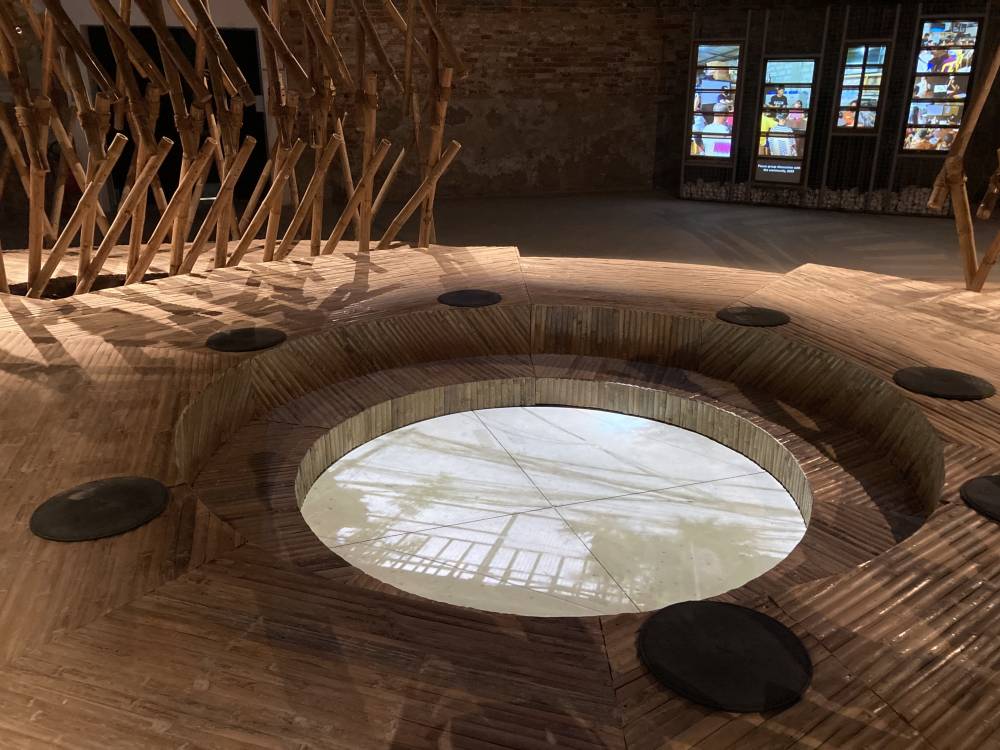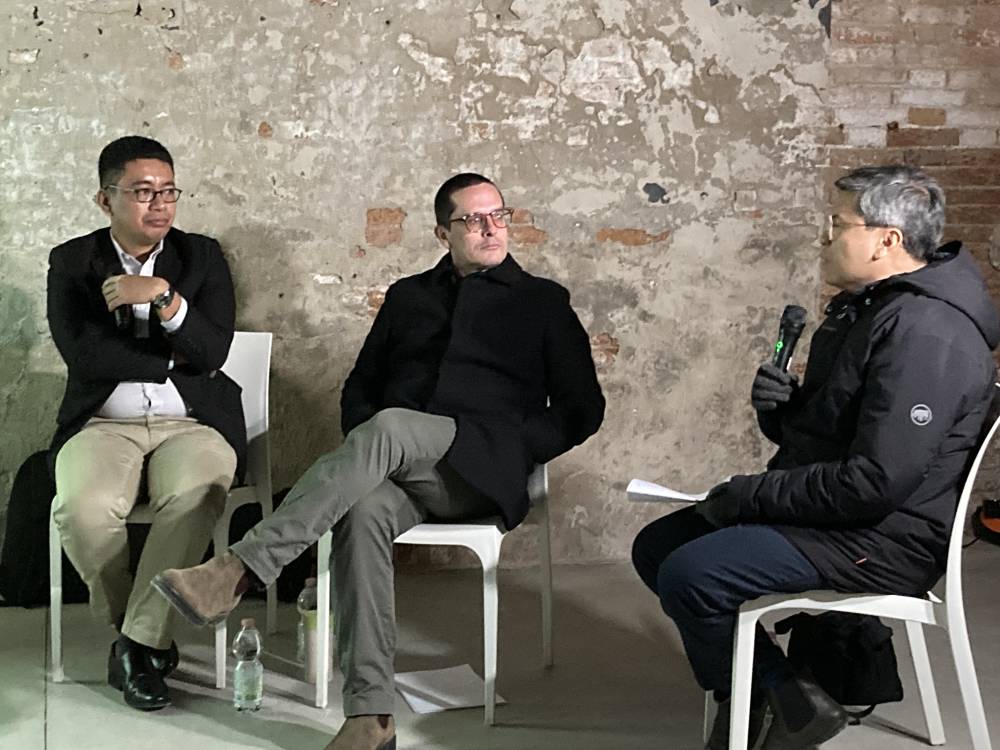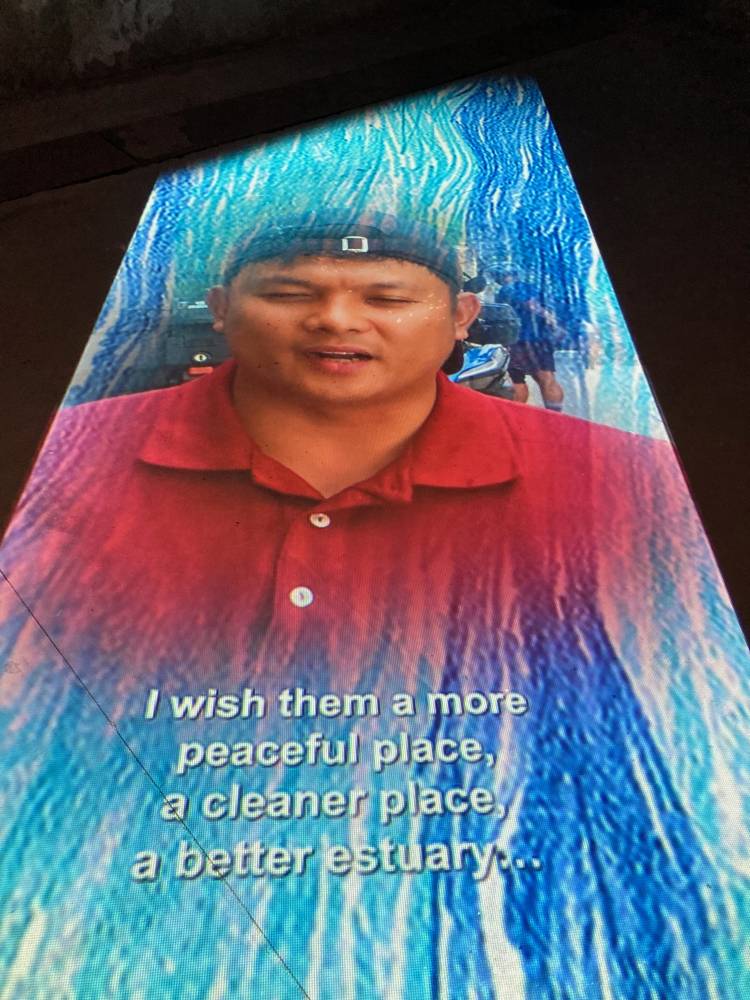
(Last of two parts)
Anthony Medrano’s talk at the roundtable discussion that closed the Philippines’ participation in the 18th International Architecture Exhibition in Venice was titled “Creole waters: Stories of culture and ecology in Southeast Asia’s estuaries,” and as he works with environmental scientists, he zoomed in on species in the Straits of Melaka, his home turf today.
For reference, he chose two natural history drawings from the National Museum of Singapore, from a collection first commissioned by naturalist William Farquhar between 1803 and 1818.
Medrano spoke about the estuarine crocodile, the world’s largest living reptile, known in Singapore (as in the Philippines) as buaya. He noted how they had once almost gone extinct, but rebounded along Singapore’s northwestern waterways, thanks to “a culture of reliance on others”—including tilapia, groupers, barramundi, crabs, birds and other species that buaya feed on, and around which their behavior is modified.
Medrano noted how seasonal monsoon rains also determine the culture and ecology of estuaries in Singapore, the Melaka Straits and across the region, as “they flush layers of organic matter down river … As productive ecosystems, estuaries are central to feeding food webs that support the lives and life cycles of humans, nonhumans and the intercultural relationships between the two.”
From the crocodiles of Singapore, Medrano moved to Sumatra and a fish called the terubuk, also known as the longtail shad, found nowhere else in the world. They are fished mainly for their eggs or telur, a prized delicacy and an actual economic driver in the area—the only place where it can be fished with the eggs still in its body.
Seen and unseen

More interesting, however, was how this nutritional and economic resource was also woven into the people’s spirituality. Medrano told about the djindjang radja, who “brokered between the seen and unseen natures of the Melaka Straits. In times of need, scarcity or absence, they communicated to the spirits, recited the necessary incantations, and enacted the required practices.” Like the Philippines’ own babaylan, perhaps, these otherwise ordinary women were depended on to pray for the regular provision of this essential fish.
Sadly, Medrano reveals, the terubuk has gone almost extinct, no thanks to “pollution by sawdust from sawmills in the 1970s. Species loss is culture loss.”
Medrano was driven to study estuaries mainly because of their interesting biological diversity. “We think it’s a dirty ecosystem, but there is life that thrives in dirty environments. Even in the most polluted waters, there are water lilies, microbes, tilapia, mudfish, dalag, species with unique superpowers that allow them to thrive where others can’t.”
He debunks the idea that all invasive or nonnative species in a waterway can only do damage. “Something that could really help rehabilitate sick mangroves, for example, is cultivating oysters and mollusks to filter the water and rejuvenate what was once there. My view on biodiversity is that it’s constantly changing. Species that are not native can perform important ecosystem services, and are part of the food web and energy cycle.”
Does Medrano see a way to resuscitate esteros? “I’m a scholar, academic and historian,” he says. “My role is to foster collaboration and raise awareness, and working with museums and universities is in that mix. It’s getting people to work together and recognize cultural and ecological value, but not to have an overly anthropocentric view. Let’s record the other life that’s there, and that will also foster healthy human populations.”
Michael Pante, meanwhile, is more realistic about controlling Manila’s obsession with automobiles. “Let’s shift to railways first, as that’s more feasible. Once we’ve established a very comprehensive railway system, to the point that the demand for cards is not as high as in previous years, then we can become more ambitious, and it could be time to revitalize our esteros—but it will take a monumental reconfiguration.”
In the message she sent, Loren Legarda noted, “We must acknowledge the pivotal role that bodies of water, particularly estuaries, play in maintaining ecological health … By investing in their preservation and rehabilitation, we can reduce the adverse impacts of climate change and protect our communities. We can revive our struggling environment as our nation advances towards sustainability and inclusive growth.”
Key word

“Sustainability” is the key word for TAC team member and social worker Arnold Rañada, who is very much involved in getting the Tripa de Gallina pavilion home and working. Training sectoral leaders—women, youth, elderly—is first on the agenda. “Important na mabuo ang core group, as the entry point of the project is to introduce solutions to the problem of solid waste management. We’re working together and using architectural intervention and social work. The pavilion is symbolic, and through it, people can remember and renew their relationship with the estero, the water and each other.”
TAC head architect Lyle La Madrid recalls how the project began as a workshop among students in the 2018 Global Summer School of the Institute for Advanced Architecture of Catalonia. He calls cocurator Funk the real “visionary.” “The context has changed since 2018—we had to let the dust clear after the barangay elections—and we need to start the conversation again, and ask them: This is our plan. Is this what you need? They have to accept it as their own.”
The work of implementation is both “overwhelming and exciting, a different project for a practicing architect, as it’s not something we get to do usually,” says La Madrid, cofounder and partner with the architectural partnership and research team LLUID, for which he has taken a leave this semester from teaching at De La Salle-College of Saint Benilde.
Rañada estimates that leadership training will begin early next year, as residents have to be equipped to sustain the program. “There’s also conscientization, because they’ve gotten used to the garbage.” Rañada has faith in the community, however, and has guided his teammates in treading respectfully. “The residents are our stakeholders. We’re helping introduce possible solutions, but sustainability will be their job.”
La Madrid affirms the “respectful” part. “In terms of architectural work, it’s about design, technical details. But in dealing with ‘client,’ we are learning a lot from Arnold. There are certain ways to communicate, and we don’t want to alienate them with highfalutin terms. The translation of their needs has to go through a process.” Both hope to see the pavilion, or its most appropriate version, in place by April 2024.
Rañada feels for the people who live by the estero, and hopes that at home, this world-class architectural project can truly change lives. “Because of poverty, people have had to think about food. They didn’t realize they had environmental and health rights. But now they know that it is their right, as well, to live in a clean, peaceful and healthy environment.”













































